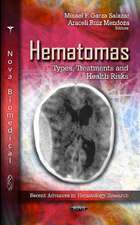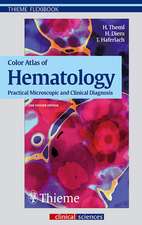Antiphospholipid Antibody Syndrome: From Bench to Bedside: Rare Diseases of the Immune System
Editat de Pier Luigi Meronien Limba Engleză Paperback – 23 aug 2016
| Toate formatele și edițiile | Preț | Express |
|---|---|---|
| Paperback (1) | 841.00 lei 43-57 zile | |
| Springer International Publishing – 23 aug 2016 | 841.00 lei 43-57 zile | |
| Hardback (1) | 721.77 lei 43-57 zile | |
| Springer International Publishing – 3 dec 2014 | 721.77 lei 43-57 zile |
Preț: 841.00 lei
Preț vechi: 885.27 lei
-5% Nou
160.93€ • 168.44$ • 133.94£
Carte tipărită la comandă
Livrare economică 31 martie-14 aprilie
Specificații
ISBN-10: 3319357107
Pagini: 280
Ilustrații: X, 267 p. 19 illus., 15 illus. in color.
Dimensiuni: 155 x 235 x 15 mm
Greutate: 0.4 kg
Ediția:Softcover reprint of the original 1st ed. 2015
Editura: Springer International Publishing
Colecția Springer
Seria Rare Diseases of the Immune System
Locul publicării:Cham, Switzerland
Cuprins
Recenzii
“The purpose is to provide an overview of this very difficult subject that will benefit bench researchers as well as bedside clinicians. The book would serve any audience who wants to know more about antiphospholipid syndrome. … This is an excellent, up-to-date overview of antiphospholipid syndrome. It will serve as a handy tool to get more information on the topic.” (Dany V. Thekkemuriyil, Doody’s Book Reviews, February, 2015)
Textul de pe ultima copertă
Caracteristici
Descriere
This book, part of the series Rare Diseases of the Immune System, offers comprehensive, up-to-date coverage of the pathophysiology and management of the antiphospholipid syndrome (APS). Immunologic and genetic aspects are discussed and the pathogenic mechanisms responsible for such phenomena as APS-mediated thrombosis and pregnancy loss/complications are explained. The main clinical manifestations, classification criteria and diagnostic tools are identified, and close attention is paid to the nature of the involvement of various organs or organ systems in APS. Specific chapters describe the treatment of the different symptoms, therapies of value in avoiding recurrences, and innovative treatment approaches. The authors are senior experts in the field who are aided by younger fellows, ensuring that the book is also educationally oriented. This handy volume will be a valuable tool for postgraduates in training and professionals wishing to extend their knowledge of this specific syndrome.

















